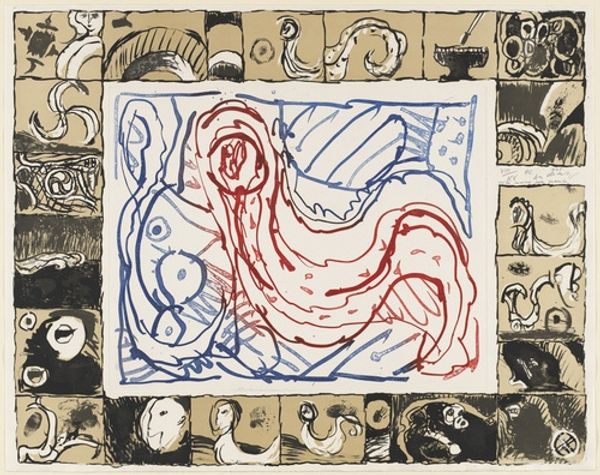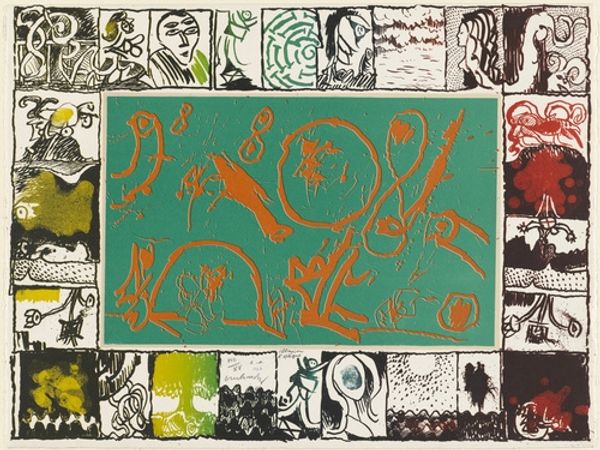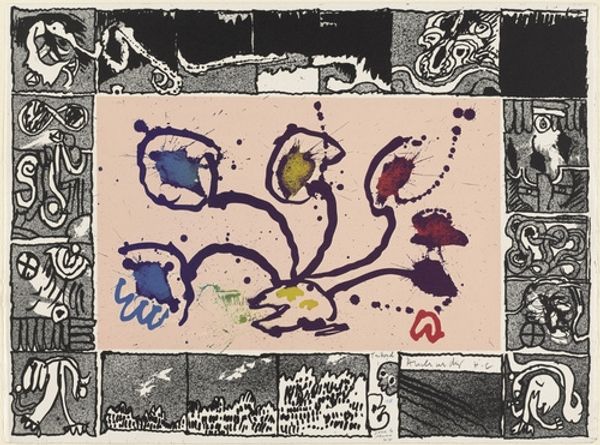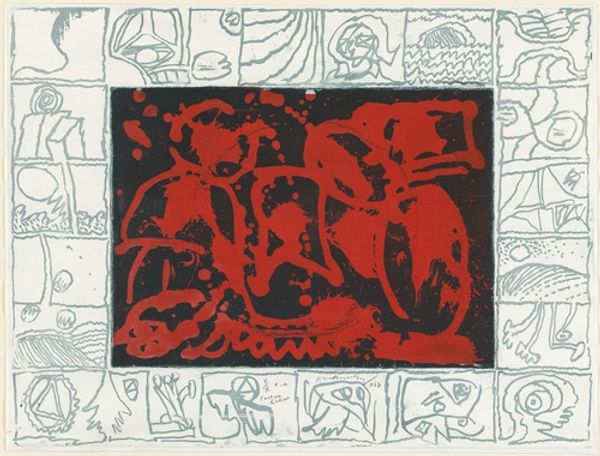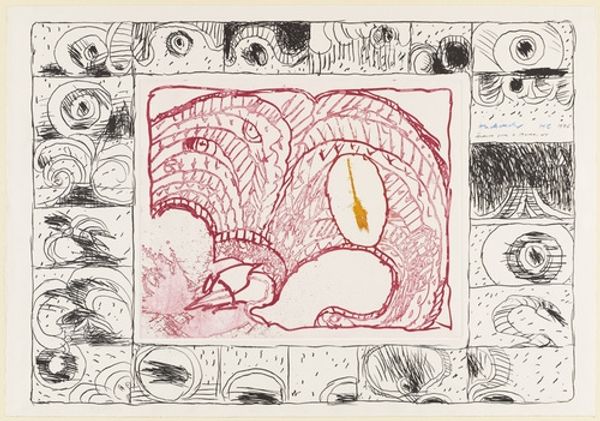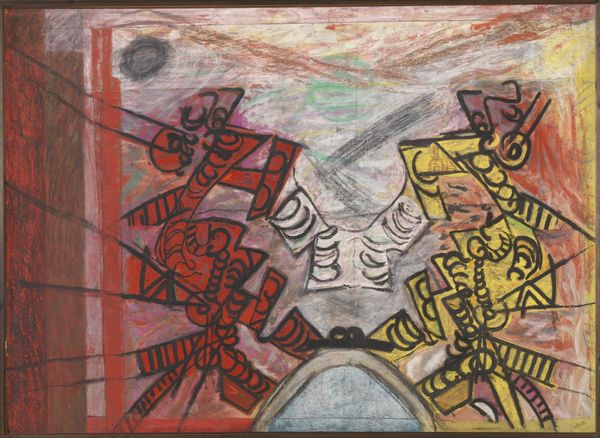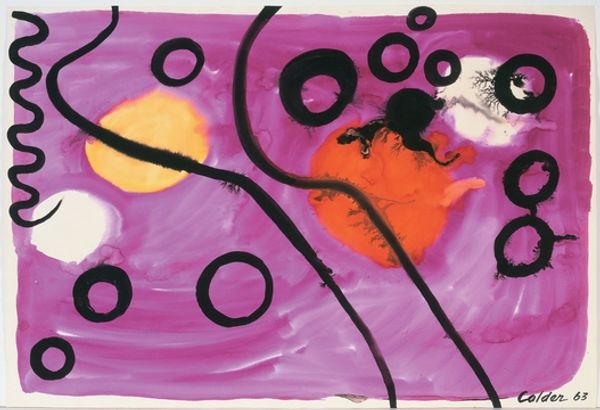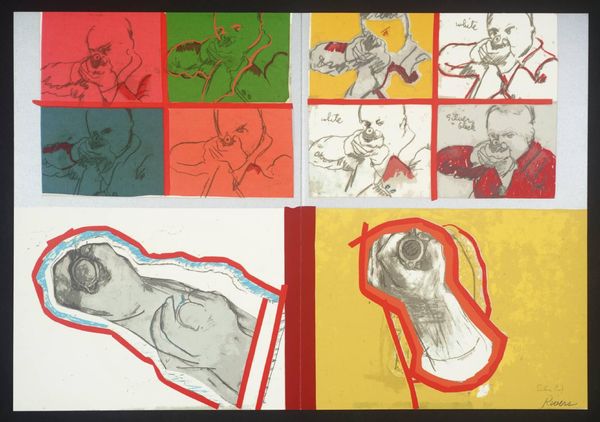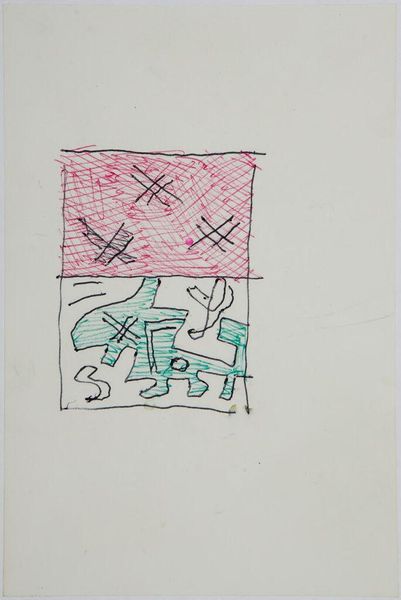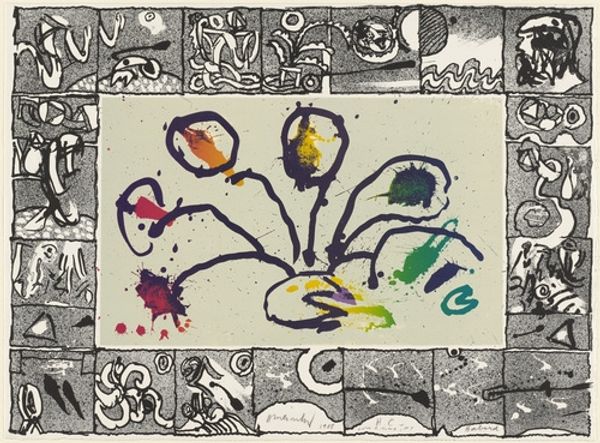
mixed-media, print, ink
#
abstract-expressionism
#
mixed-media
# print
#
form
#
text
#
ink
#
abstraction
Copyright: Pierre Alechinsky,Fair Use
Curator: Pierre Alechinsky’s "A Right to Look," made in 1968 with mixed media including ink and print, presents a curious composition. It's like a central form trying to break free from the grasp of these enclosing, almost whimsical vignettes. What’s your initial impression? Editor: It feels like a page from a visual diary, or a collection of sketches surrounding a more developed central image. How do you interpret this work? Curator: Looking at the process itself, we can see how Alechinsky blurs the lines between "high art" and everyday mark-making. The central image is built up through layers of ink and print, suggesting a deliberate act of building and obscuring. These surrounding motifs, made of simpler media and arranged somewhat randomly, almost give the impression of labor or process that has become fetishized through repetition of images and forms.. Editor: The border reminds me of illuminated manuscripts, but with a chaotic, almost rebellious energy. Does that reading resonate with you? Curator: Exactly! The use of a printmaking medium, traditionally used for mass production, combined with unique, hand-drawn elements creates tension, questioning ideas about artistic labor and authenticity. What is truly "original" here when we see mass production techniques alongside the labor of creating many individual and original artworks surrounding it? Is the process more valued than the final product, as the title "A Right to Look" suggests? Editor: I see what you mean! It makes you consider where value is placed, and how much labor went into even what looks simple, such as the bordering scribbles. I hadn't considered the material aspects that strongly. Curator: Considering these processes can provide insights into the conditions of art creation itself. These are not arbitrary images; they emerge from particular social and material circumstances. The question then becomes: what are those circumstances, and how do they shape our perception? Editor: That's given me a completely new perspective on Alechinsky's piece. Thanks! Curator: And thanks to you, I will explore labor values in his production more closely now!
Comments
No comments
Be the first to comment and join the conversation on the ultimate creative platform.
